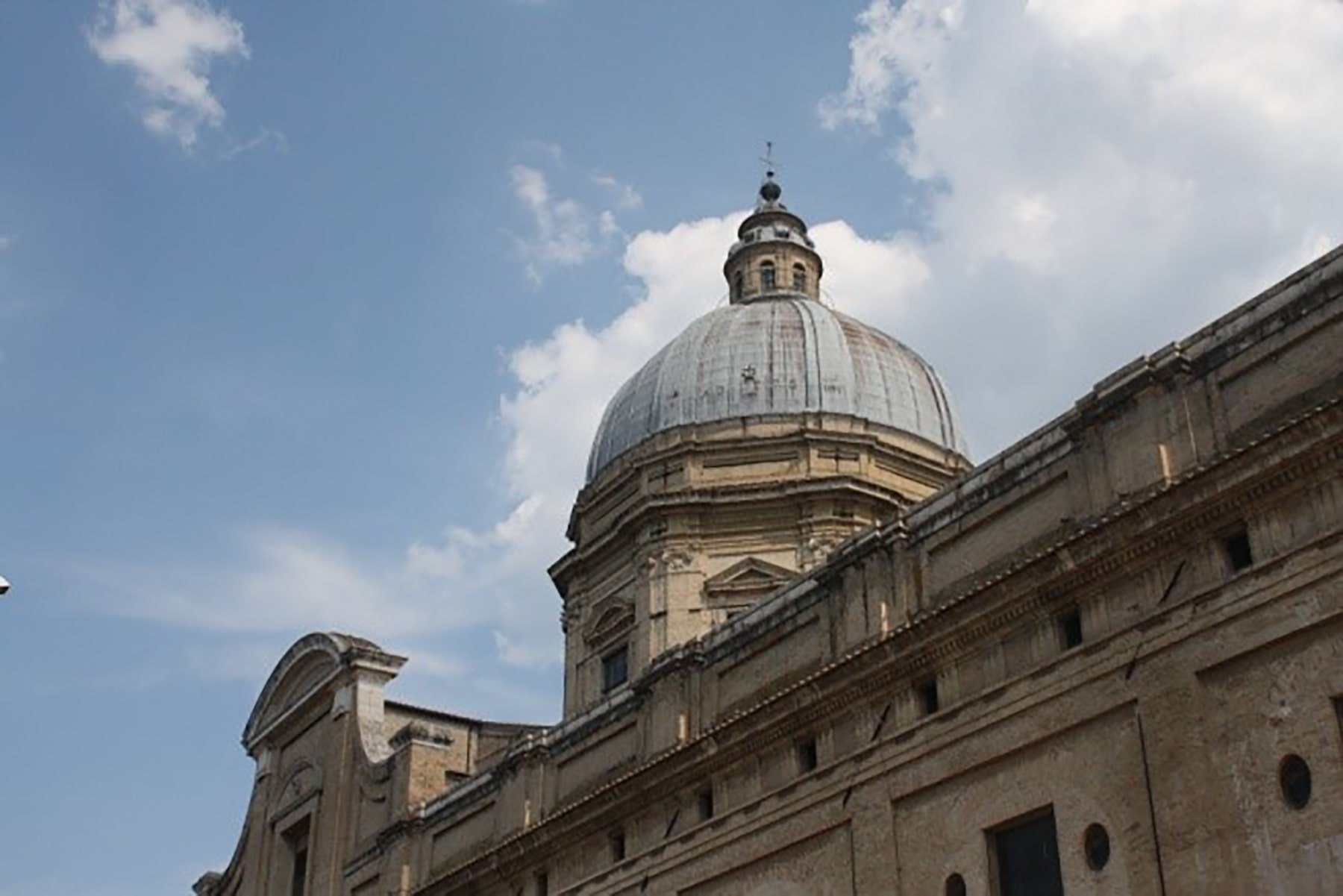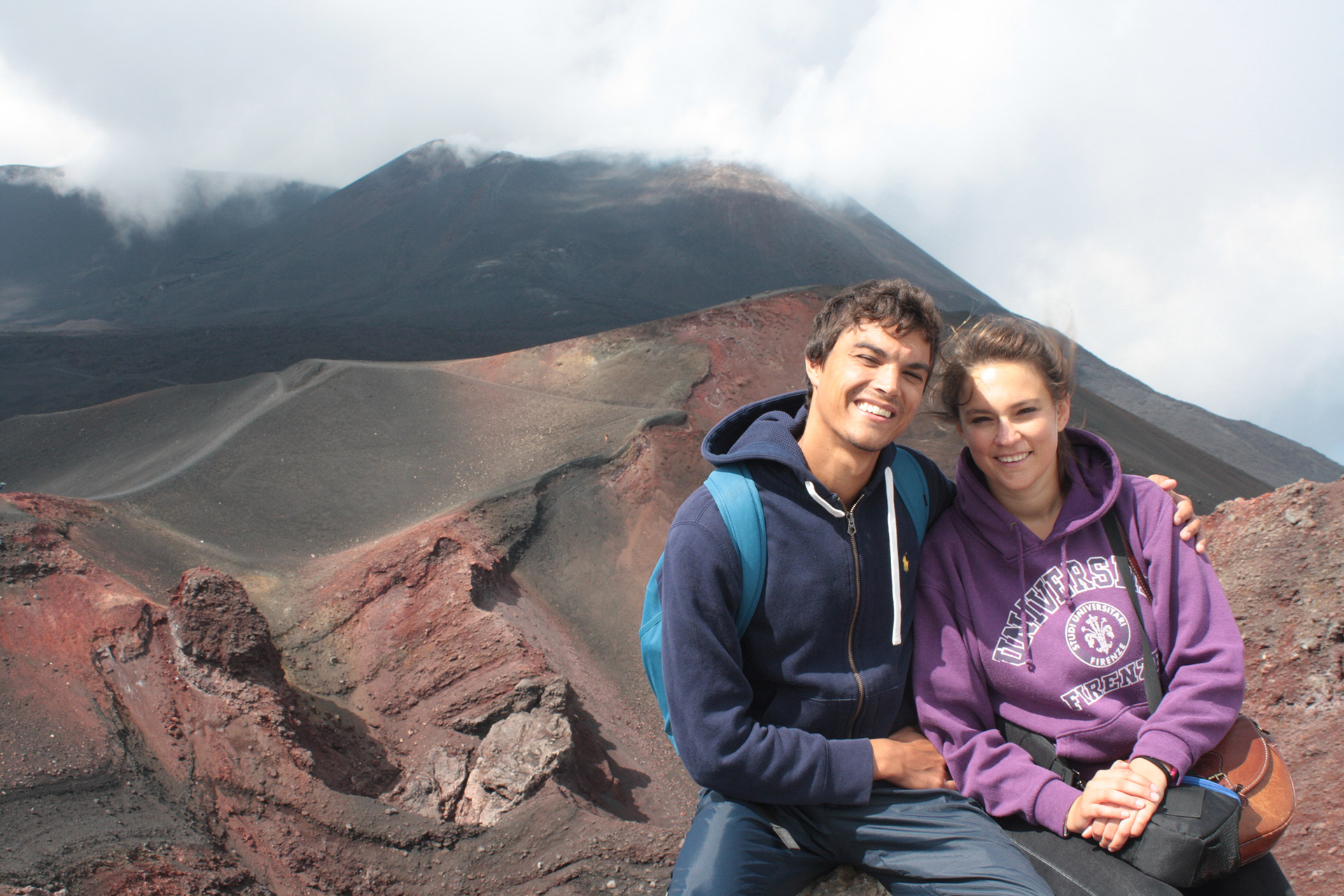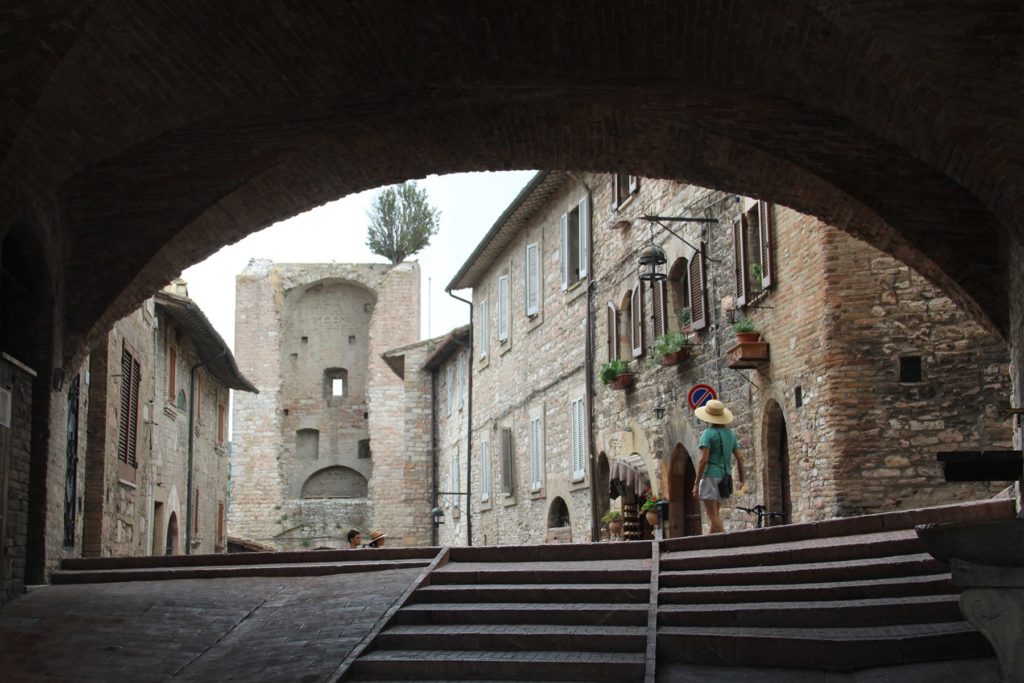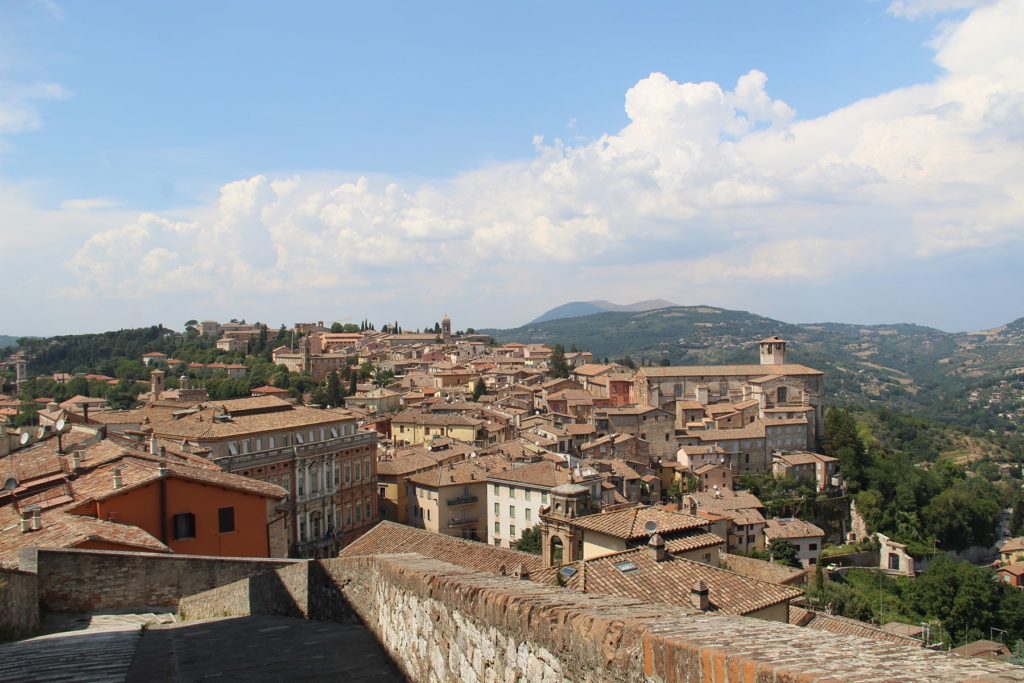Assisi is a tiny city perched on the side of a small hill. It’s the city symbol of peace and dialogue between religions, as well as the home of Saint Francis, Italy’s patron saint, filled to the brim with mysticism. We spent one full day in Assisi; given its small size, you can visit it all in half a day if you’re in a hurry, but we suggest taking all the time you need to visit it slowly.
Before moving on to the description of our day, here are some practical pieces of information: there are many parking spots, both at the foot of the hill, where you can take a bus that will bring you to the top, and at the top of the hill, where there are some paying parking spots. However, we managed to randomly find a free parking spot at the top of the hill outside of the city’s walls.
We slowly made our way down to the city, getting lost in its winding and beautiful little streets, which brings us to the first item on the list of seven things to see in Assisi in one day.
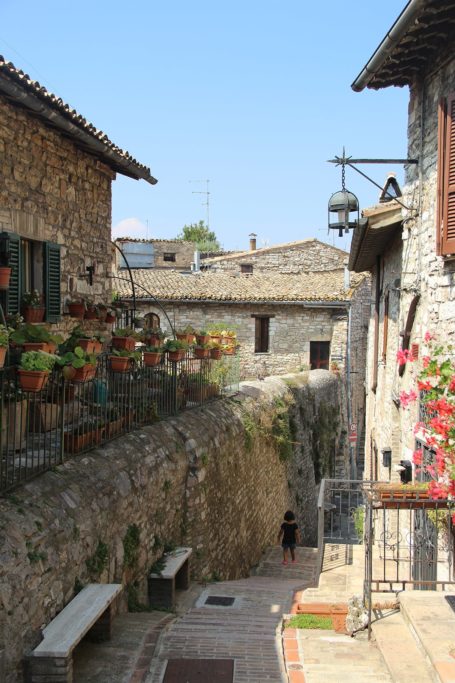
Table of Contents
1. Strolling the streets looking up
As we suggested in the article on our trip to the city of Perugia, the best way to visit a city is strolling around and getting lost in its small streets. Moreover, the city of one of the most famous saints in the world is dotted with many churches; by walking around looking up to the sky, you will be able to spot many belltowers standing over the roofs, as well as wonderful views on the countryside.
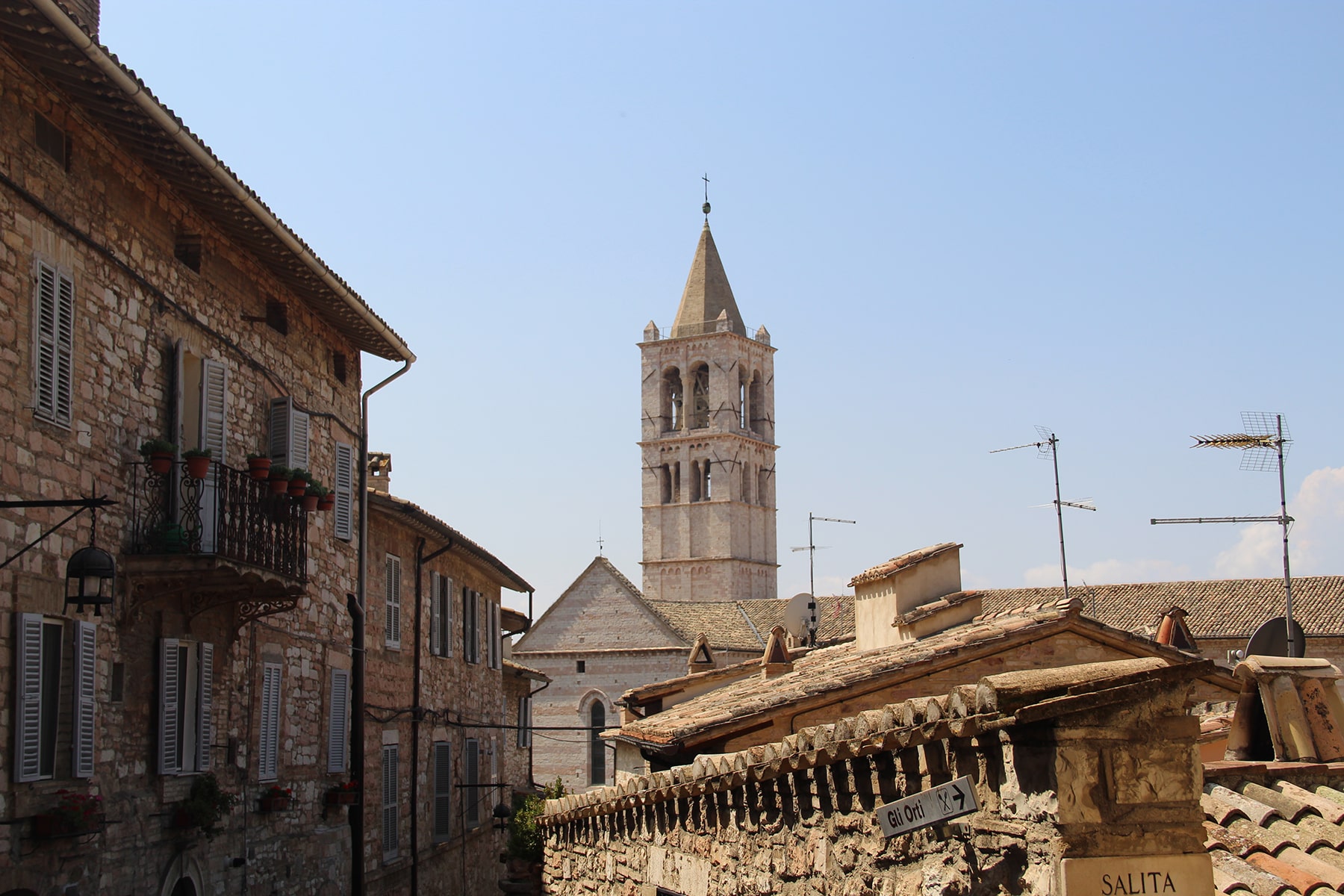

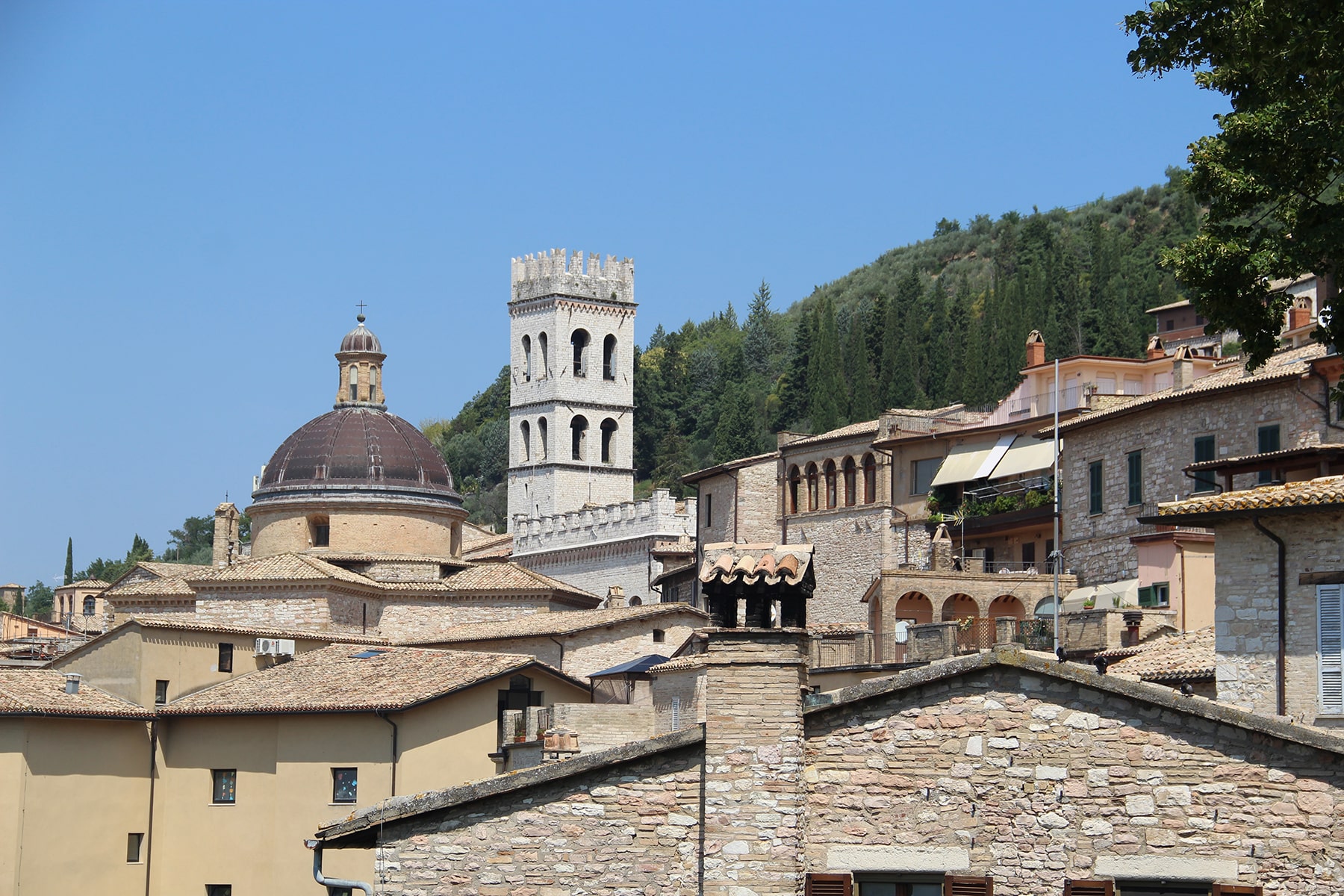
2. The cathedral of Assisi
The cathedral of the city is not the Basilica of Saint Francis, but the Cathedral of Saint Rufinus which features a façade decorated with many allegoric figures depicting scenes of the apocalypse.
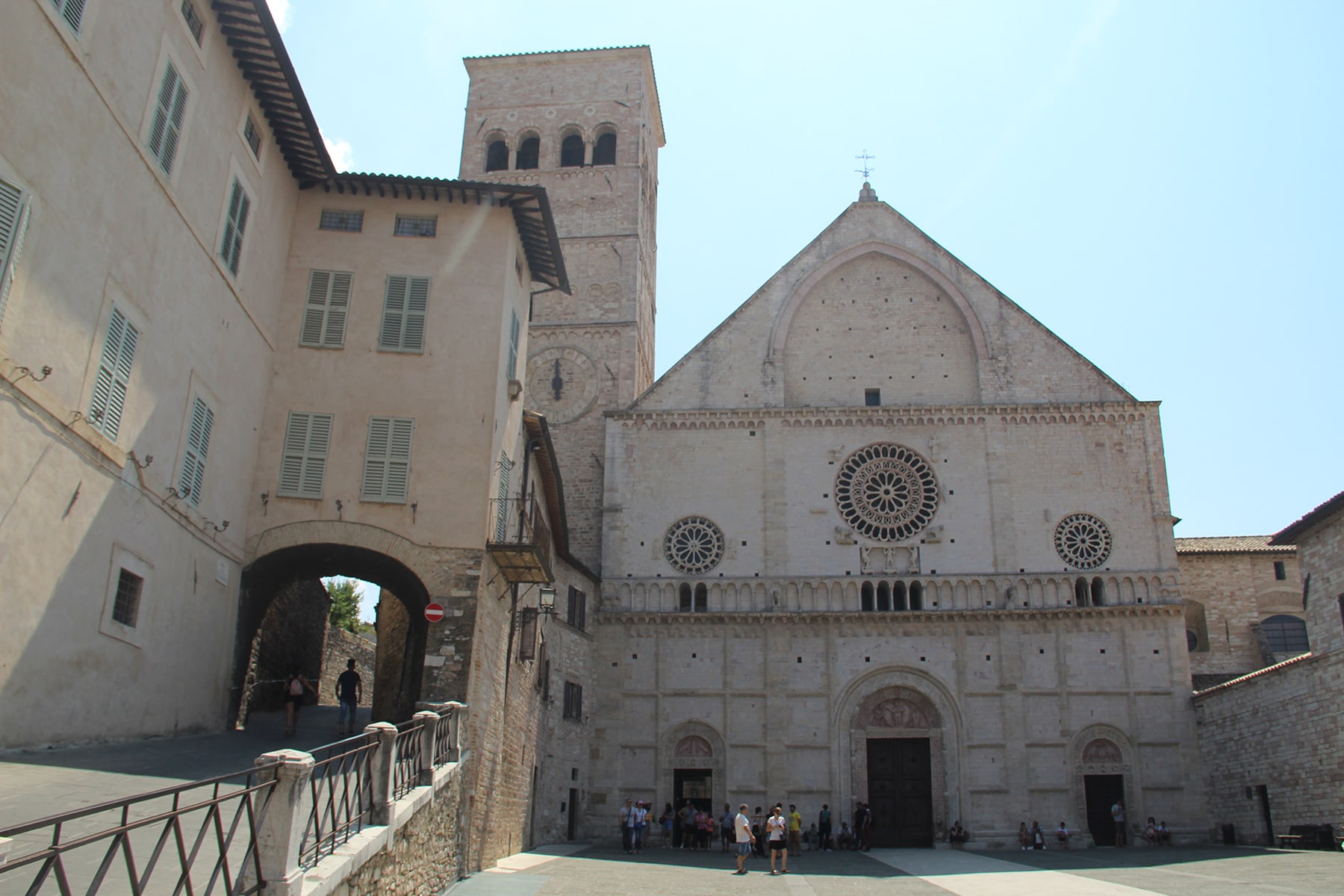
We kept on going down along the main road and we reached the main square of the city of Assisi that does not conceal very well its Roman past, given the imposing Temple of Minerva.
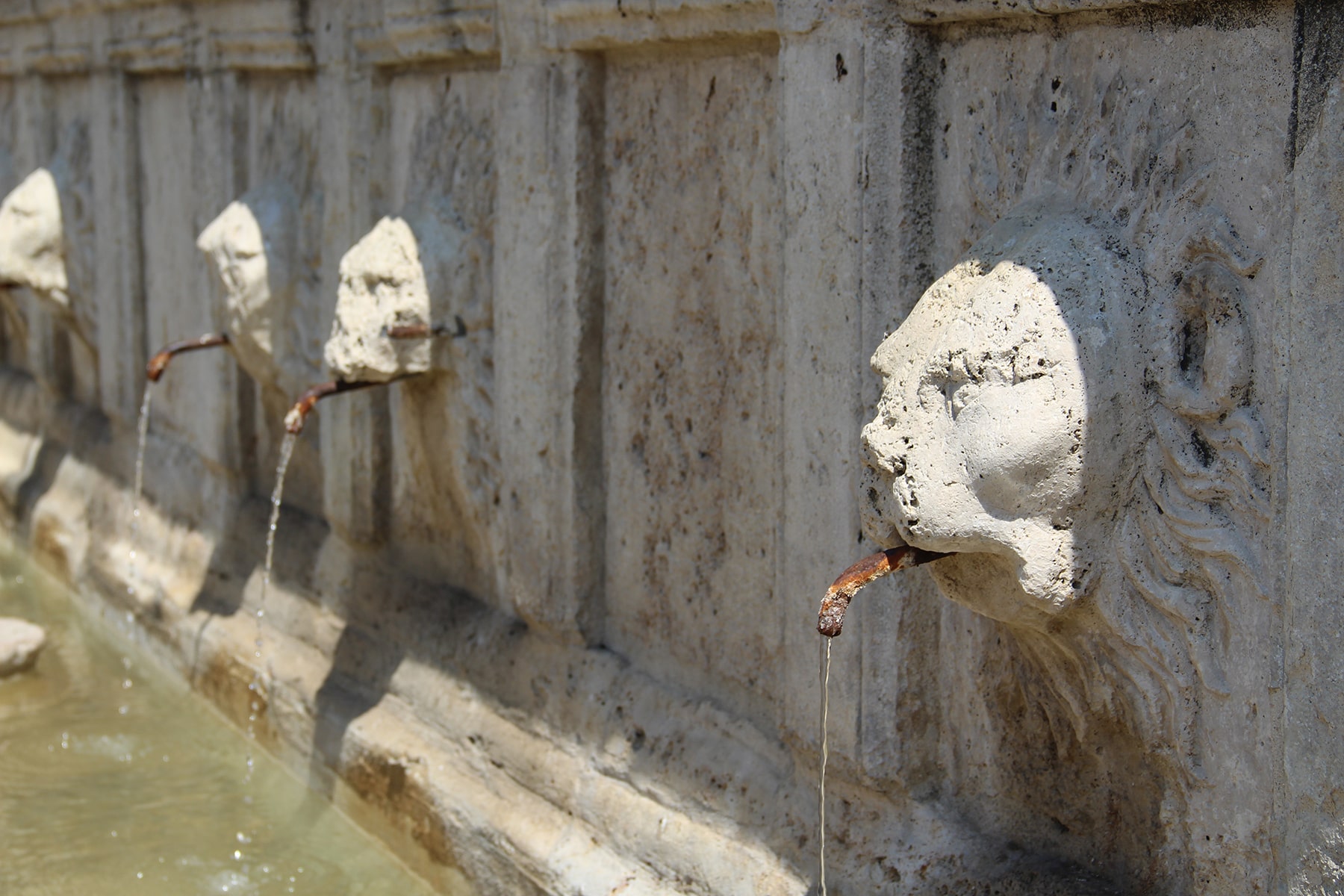
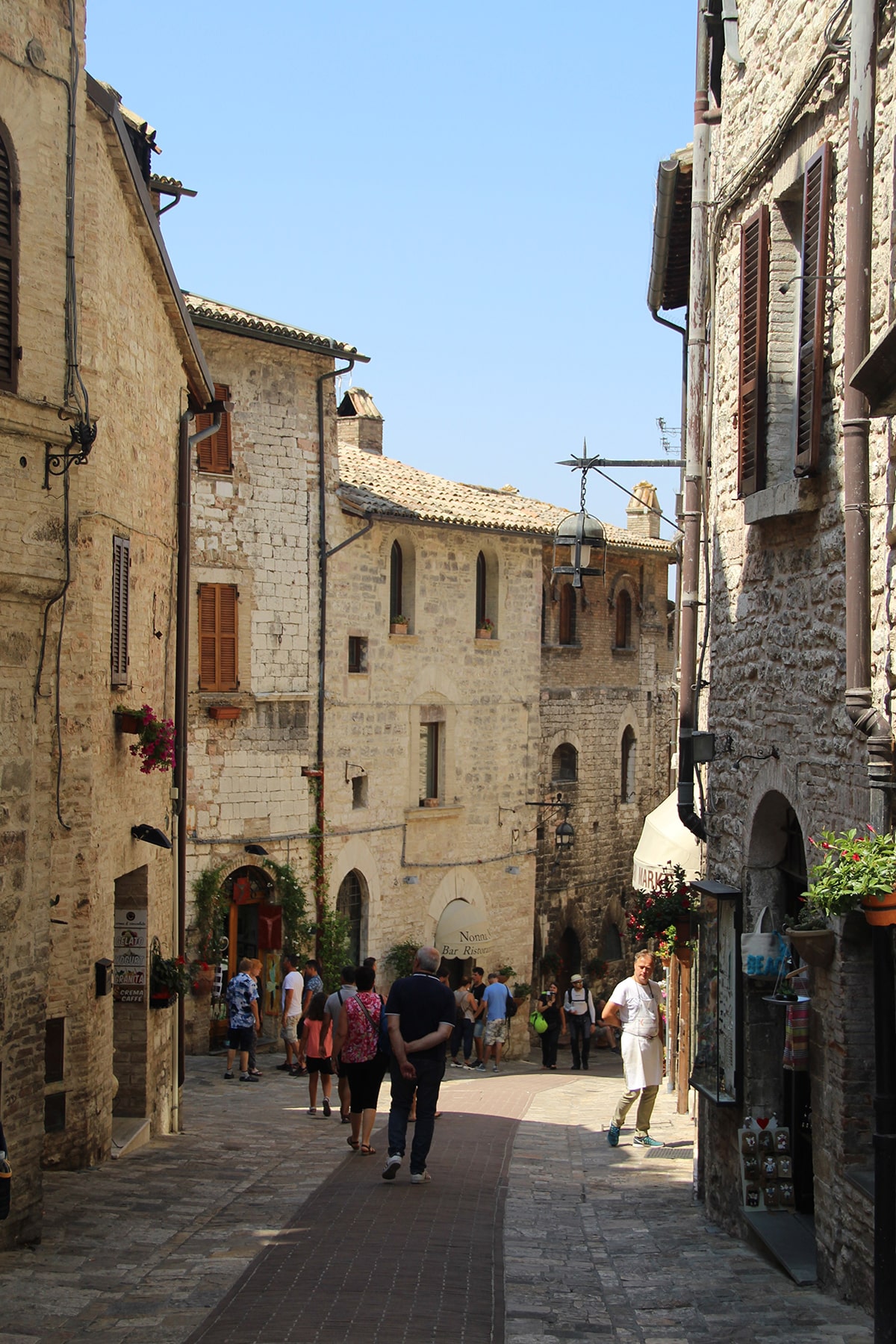
3. The temple of Minerva
The temple of Minerva, dating back to the I century AD, is definitely too big for the small square where it stands, and we had to step back in order to be able to see its façade. By doing so, we found ourselves under a small arch decorated with frescoes with motives belonging to the grotesque art, called volta pinta, which was once home to the temple of the herbs.
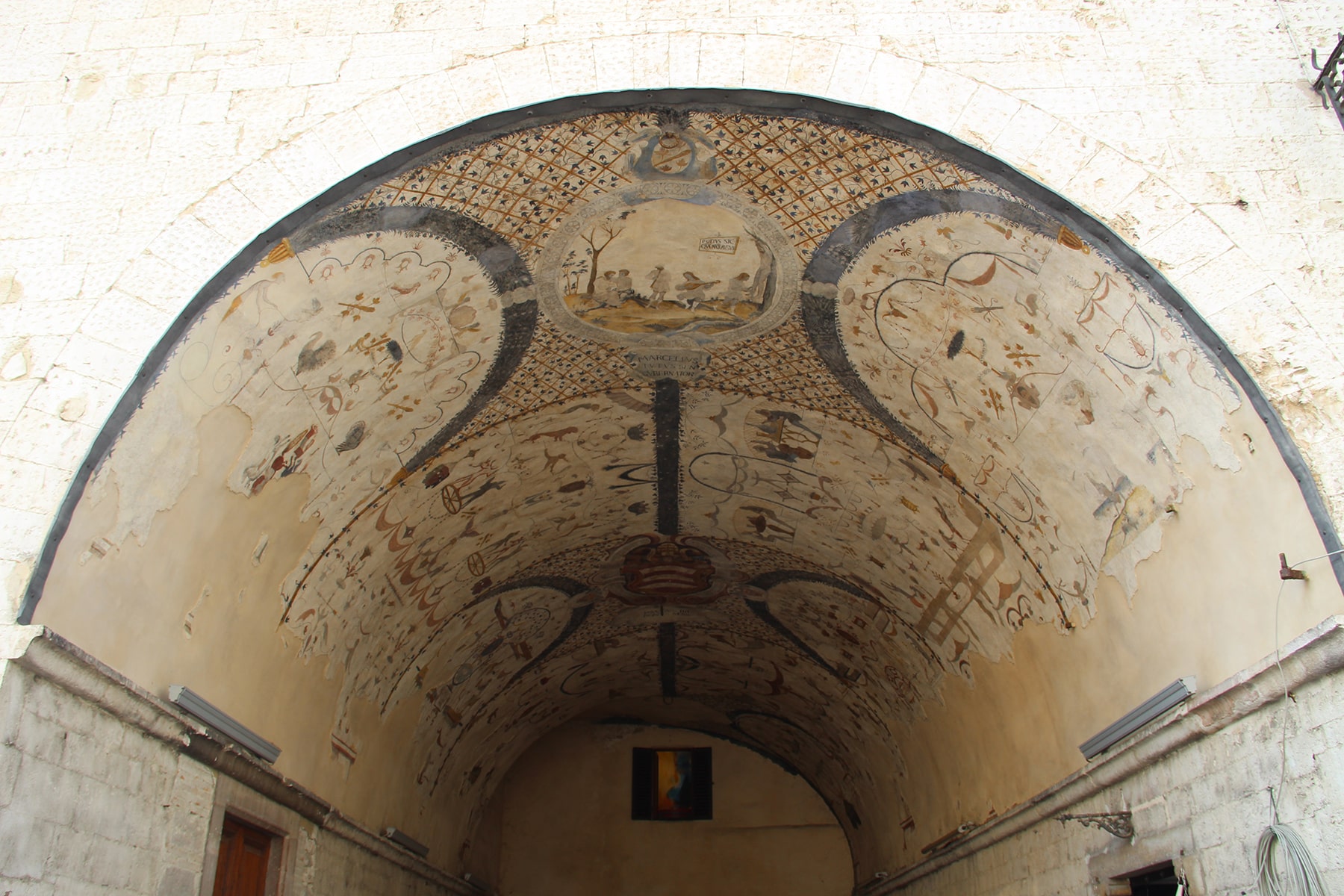
Let’s go back to the Temple of Minerva which once belonged to the Roman acropolis. The huge Corinthian columns supporting the façade are Roman architecture, but its inside is baroque, since the temple was turned into a church, which actually guaranteed its survival.
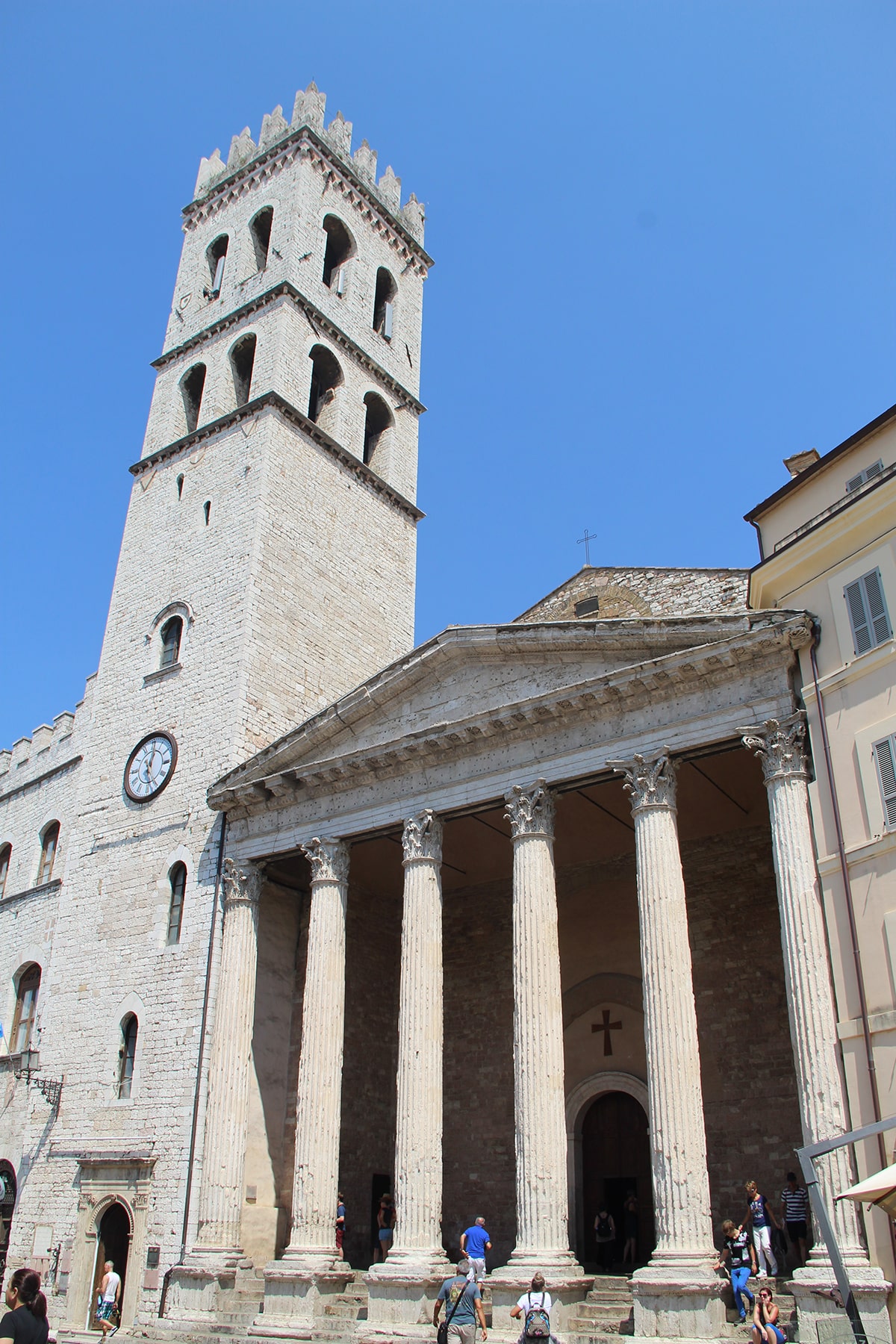
4. Archaeological tour
The cities of Umbria all feature a mix of different times and styles. The belly of the city often hides many ruins belonging to the past, which show us how ancient buildings used to look like. There’s an actual overlayering of different times, which can clearly be seen during the archaeological tours that many cities in Umbria offer. Assisi is definitely up to the task: the visit to the Roman forum is impressive. It allows us to discover the underground of the municipality square, which corresponded to the Roman forum, with the sewer system and the foundation walls of the temple of Minerva, as well as the old entrance to the temple. Thanks to 3D videos and other reconstruction models, we understood how the ancient forum looked like, and we were able to see from close-by the base of statues that were once displayed in the square. In the end, we could also see some ruins of workshops located around the square and, sometimes, what was left of window bars used to close up the shops.
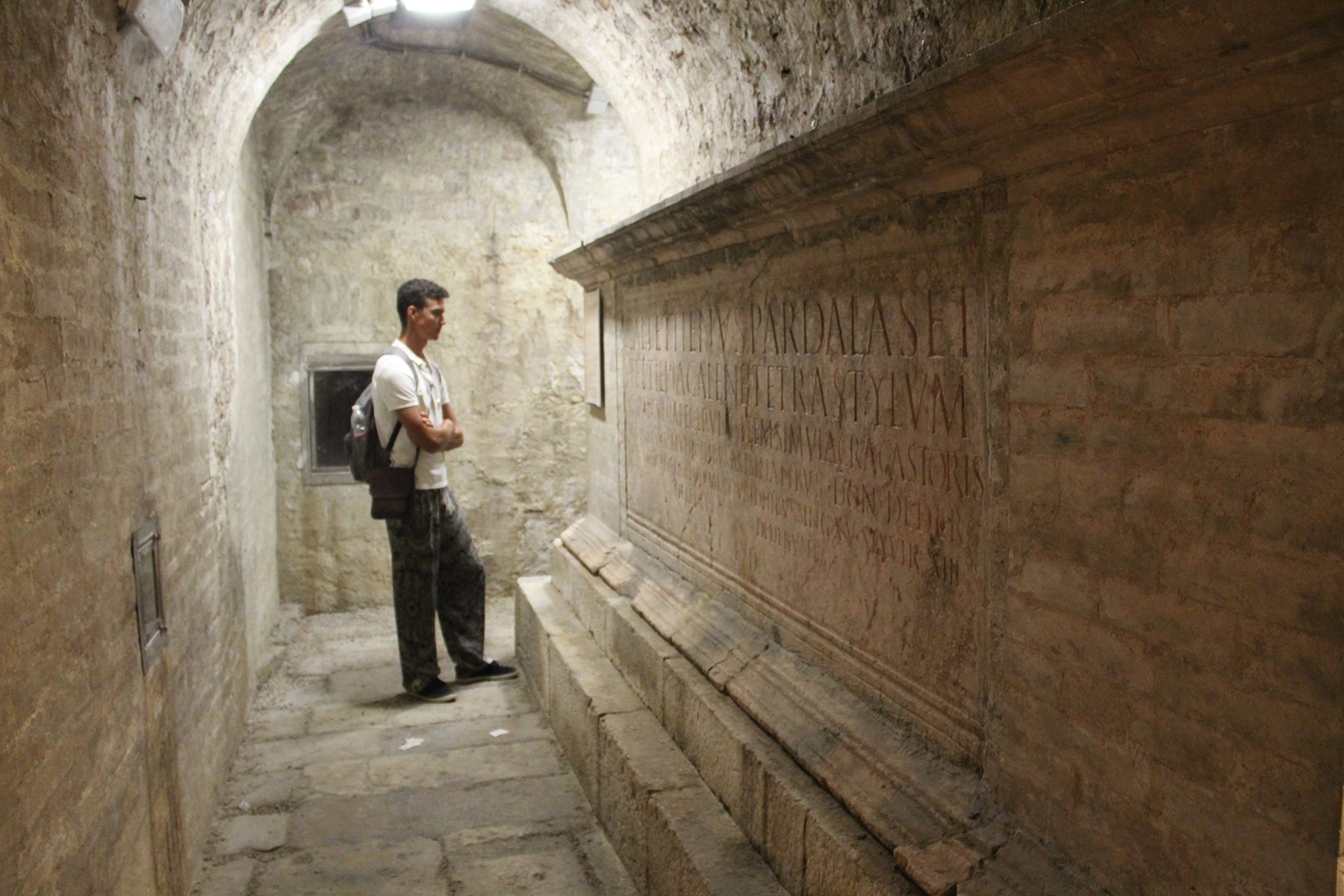
After having visited the Roman Forum, we went down to the Basilica of Saint Francis, one of the most important places of worship in the world and one of the most beautiful churches we have ever seen. The Basilica is divided into Upper church and Lower church.
Roman forum
Price ticket: 4€.
The visit lasted: 45 minutes.
5. The Basilica of Saint Francis
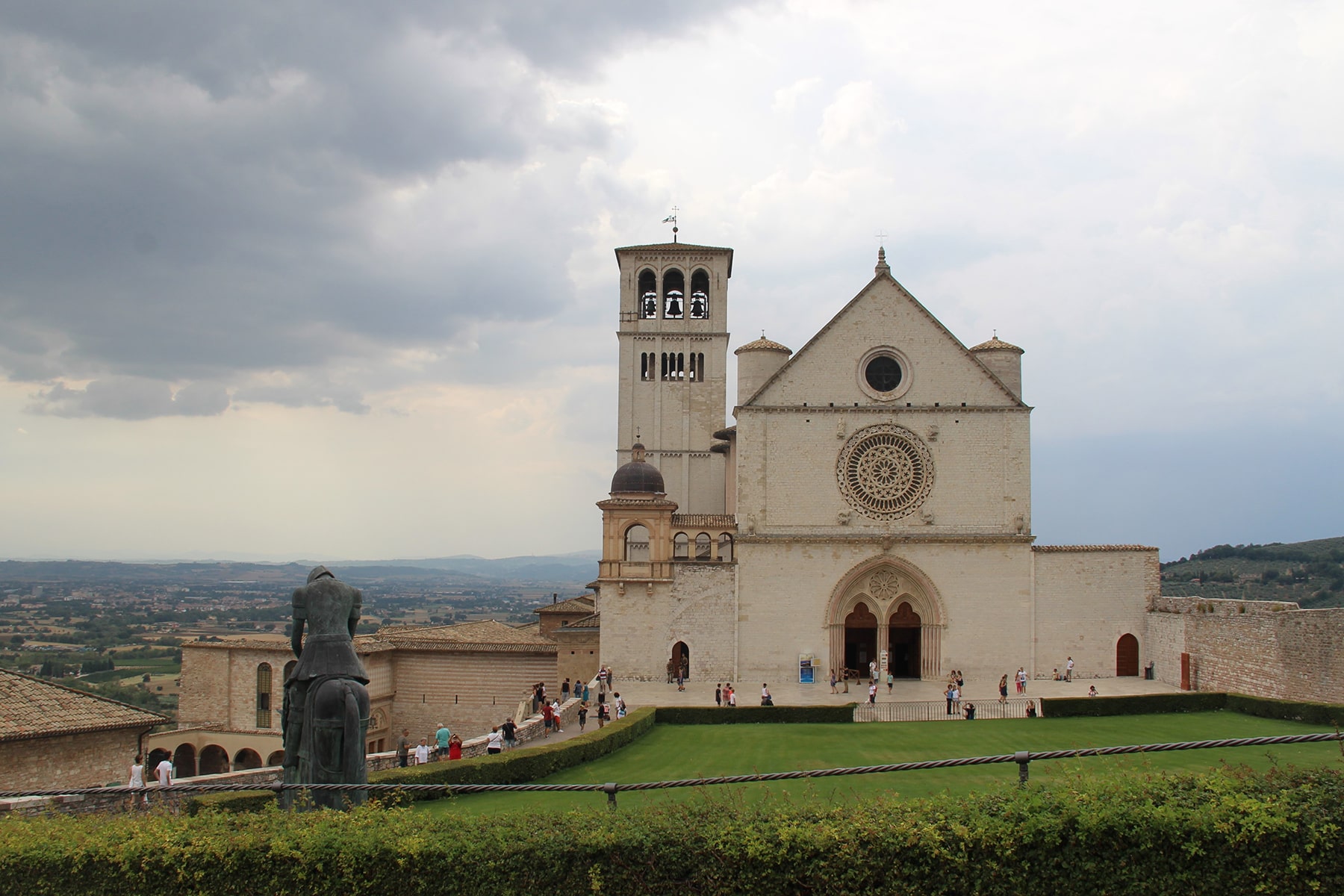
We started by visiting the Upper church which was built right after the lower church. The upper church is completely decorated with frescoes by Giotto and his students, depicting the life of the saint; the basilica’s vaults are painted with Giotto’s signature blue and are dotted with stars, which makes them a wonderful starry sky. It’s important to admire the scenes depicting the life of the saint and the scenes from the Ancient and New Testament. In the transept you can see the famous Cimabue’s crucifix painting. These frescoes are particularly important for art history, since they mark the beginning of the Italian Renaissance painting. The dome, which crumbled down during the horrible earthquake in 1997, was restored and brought back to its former glory.
We gained access to the lower basilica by taking a spiral staircase. The lower basilica was the first one to be built, right after Saint Francis had passed. It is shaped like a Tau, the characteristic cross of the Franciscan friars, and it’s fully decorated with frescoes by some of the most important artists of the time, which had come to Assisi to help building and decorating the basilica for the saint. From the lower basilica you can enter into the crypt, where lie the remains of Saint Francis.
Next to the basilicas, you can admire the sacred monastery where the friars in charge of the basilica live. It cannot be visited, but you can see its majestic outside.
Basilica of Saint Francis
Price ticket: free entrance.
The visit lasted: around two hours, as long as you’d like. It’s forbidden to take photos..
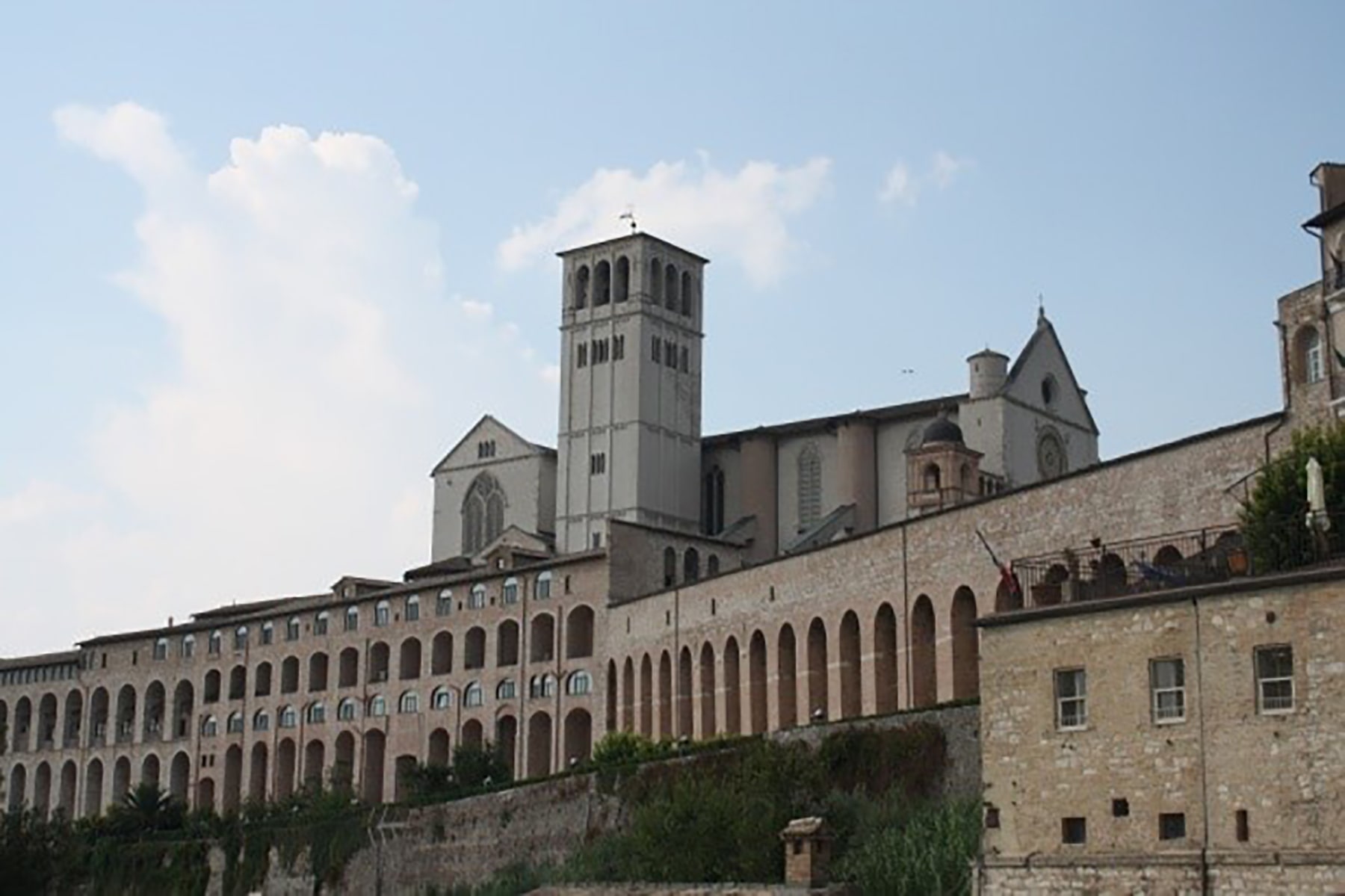
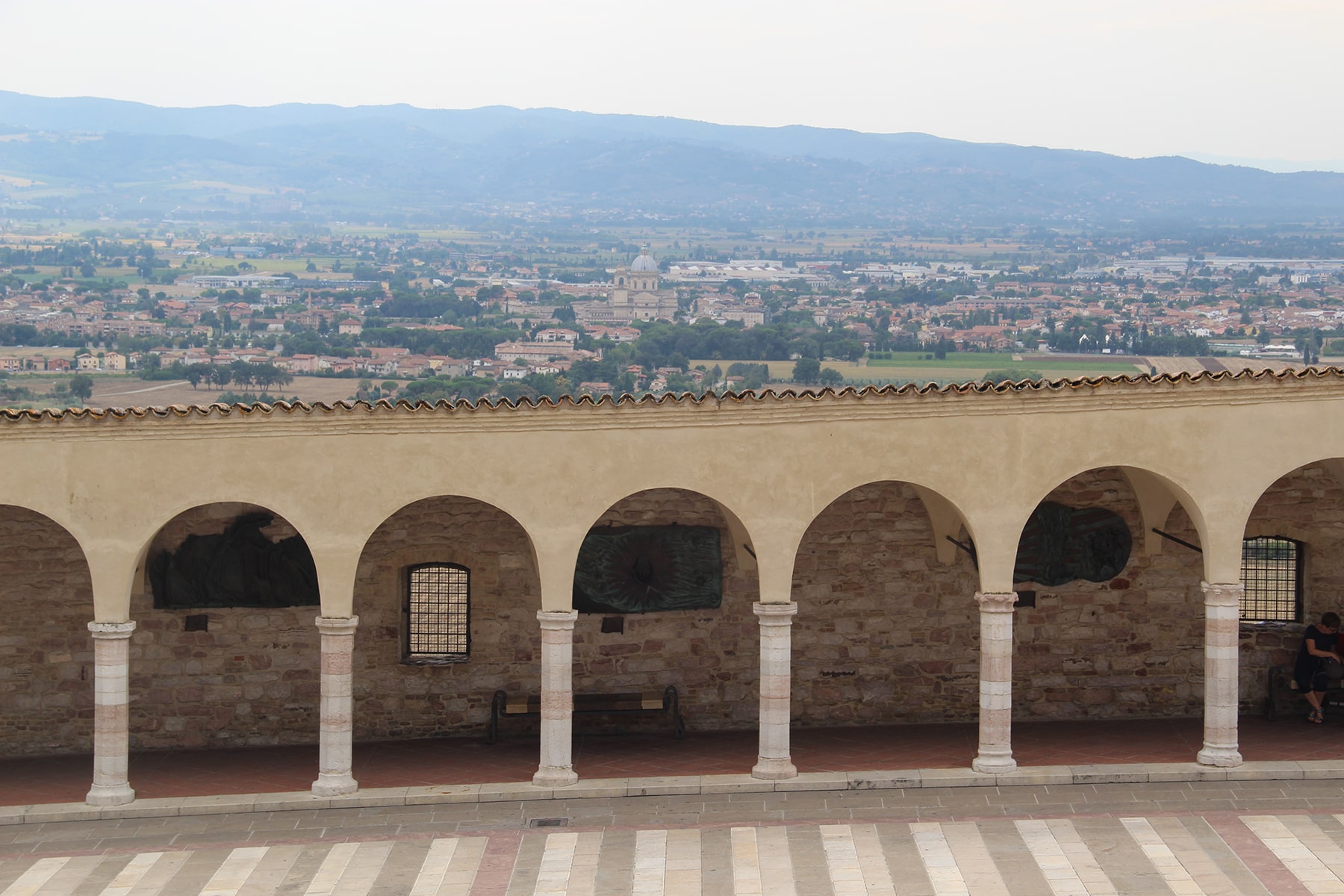
We took the car to go visit the last two places: the hermitage Eremo delle carceri and the Basilica of Saint Mary of the Angels. We walked for the last time through the streets of Assisi, getting lost among the wonderful Medieval streets and discovering new views all the time.


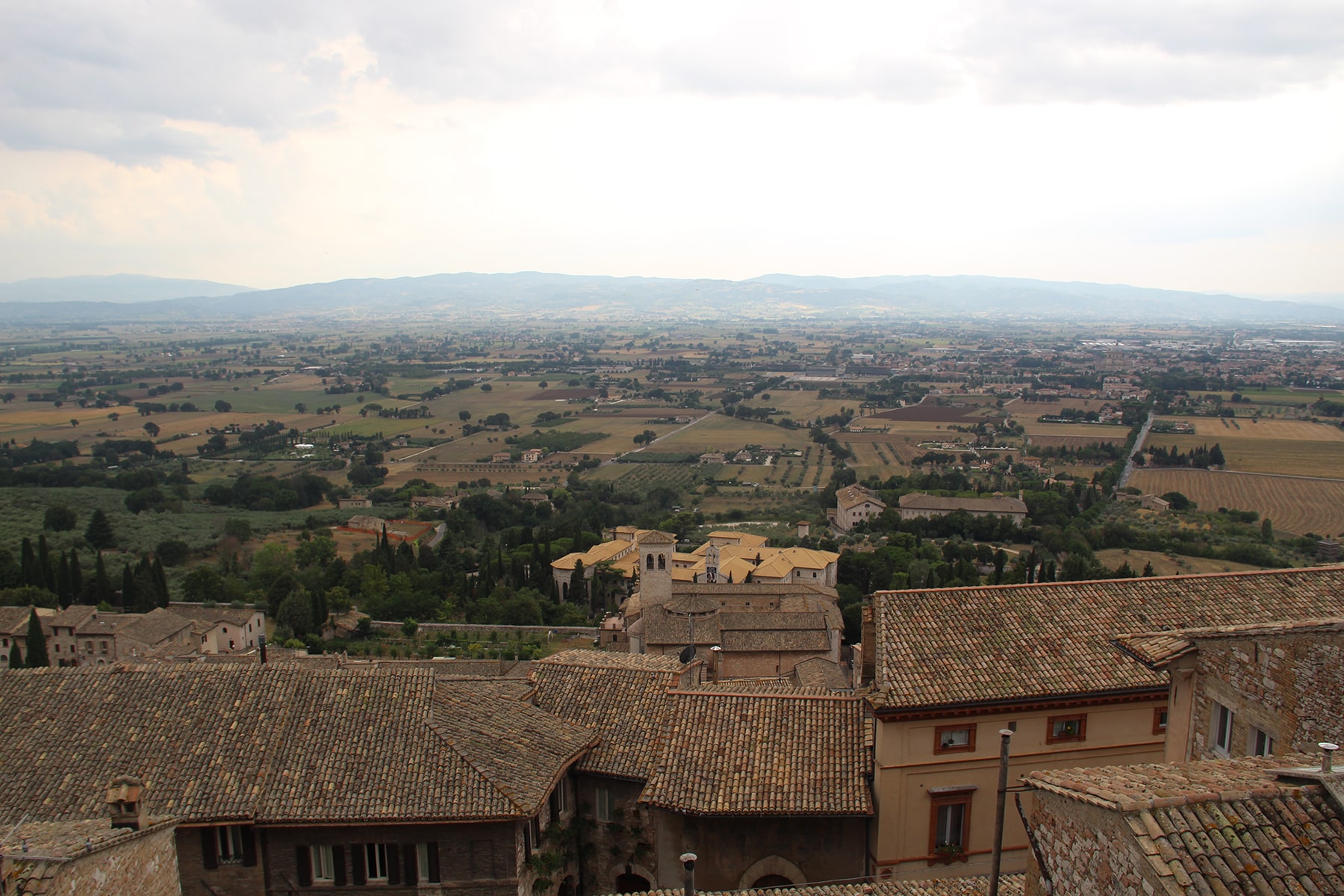
6. The hermitage Eremo delle carceri
The hermitage complex Eremo delle carceri is a sacred monastery plunged in a wood, 4 km from Assisi. It was the place where Francis and other friars would go to lead a praying and meditating life. The monastery includes the caves where the friars would pray and sleep. In order to reach Saint Francis’ stone bed, one needs to bend down and walk through small passages. The wood is sacred, too, and there are many paths, bearing the name of Francis’ mates, that you can walk around in silence and meditation.
Eremo delle Carceri
Price ticket: free entrance.
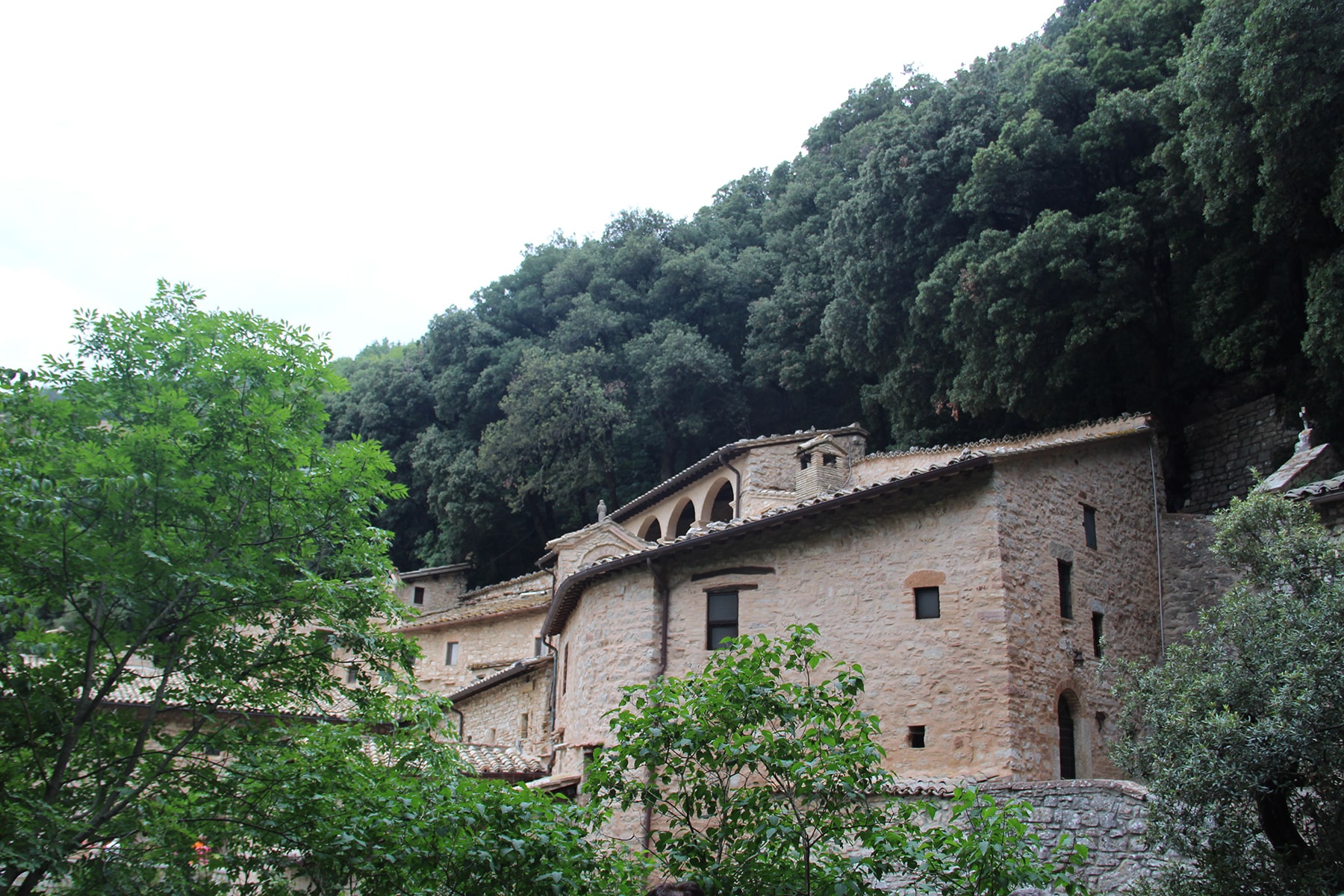
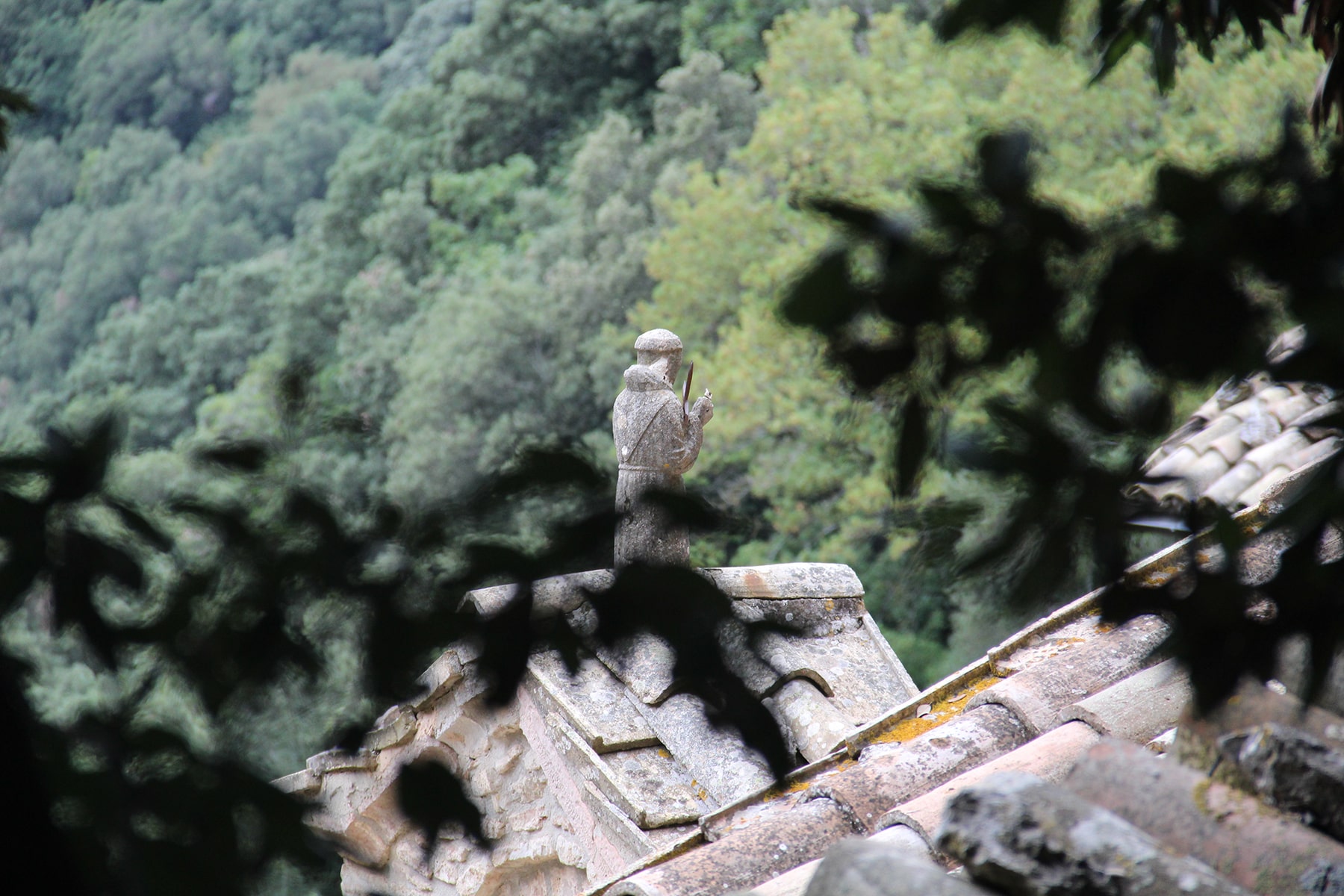
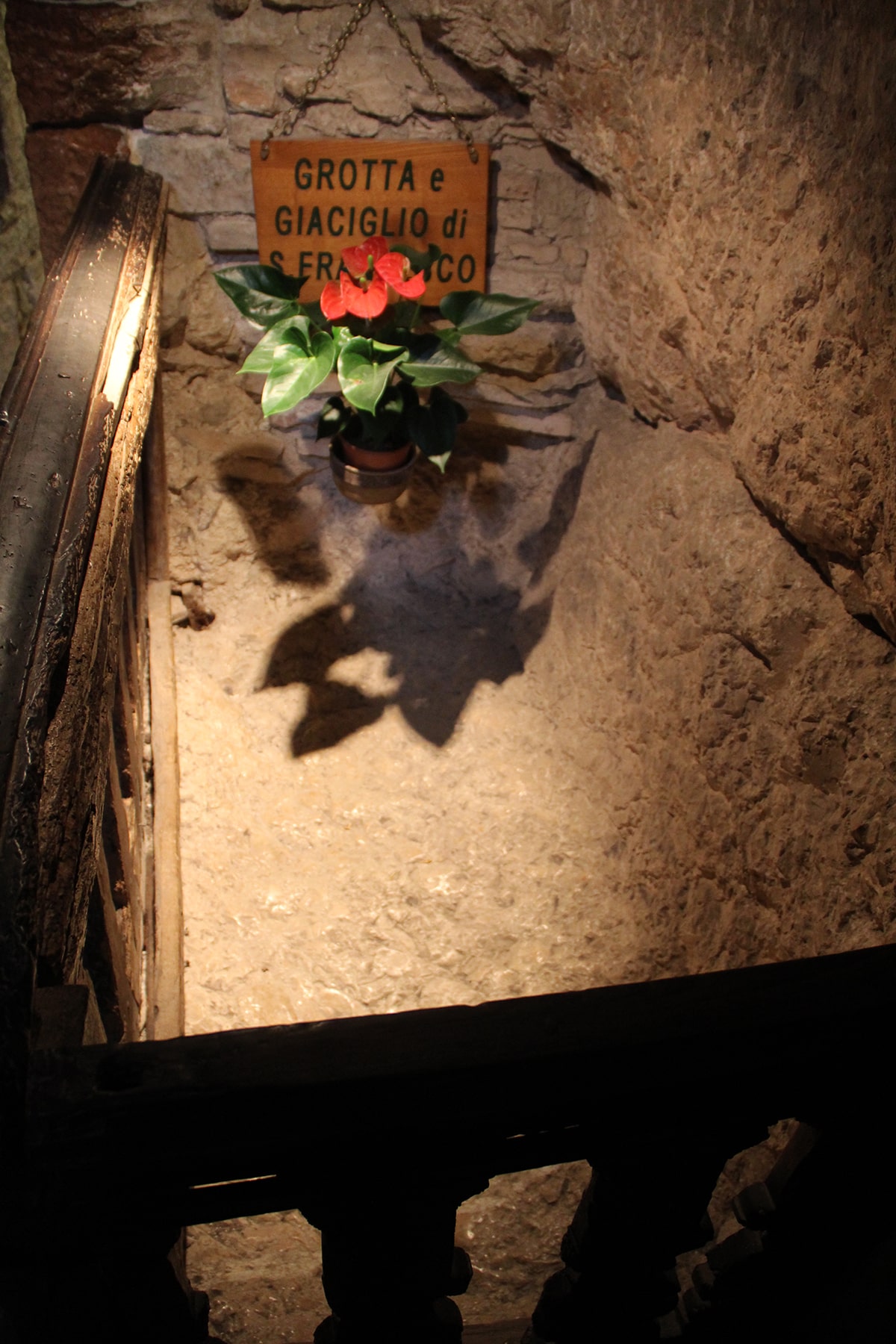
7. The Basilica of Saint Mary of the Angels
At the foot of the hill of Assisi, there is the huge Basilica of Saint Mary of the Angels; inside the basilica, you can find the marvellous Porziuncola, a tiny Franciscan chapel decorated with frescoes, where Francis founded the Franciscan order, as well as the Chapel of the Transito, where Saint Francis died.
